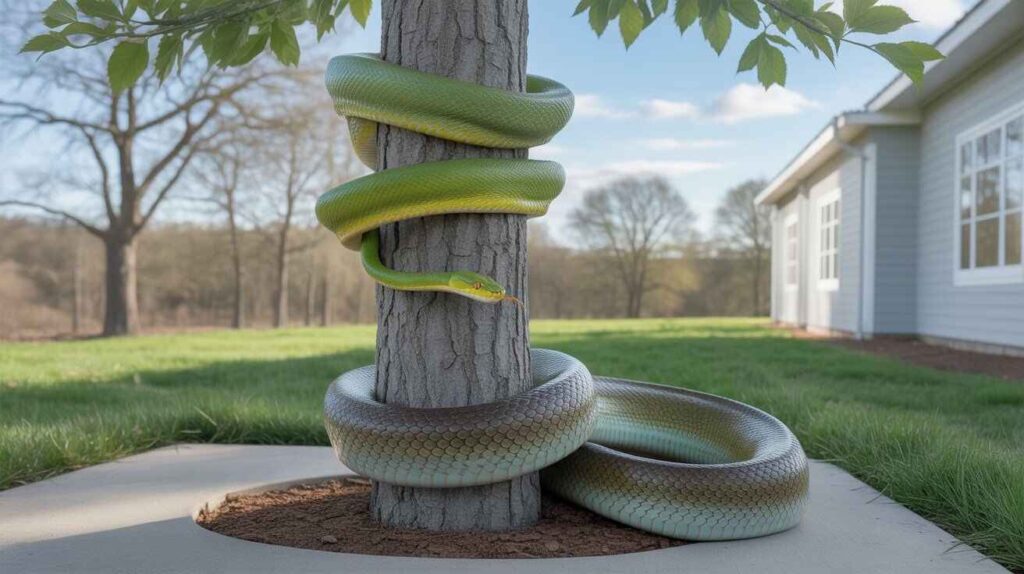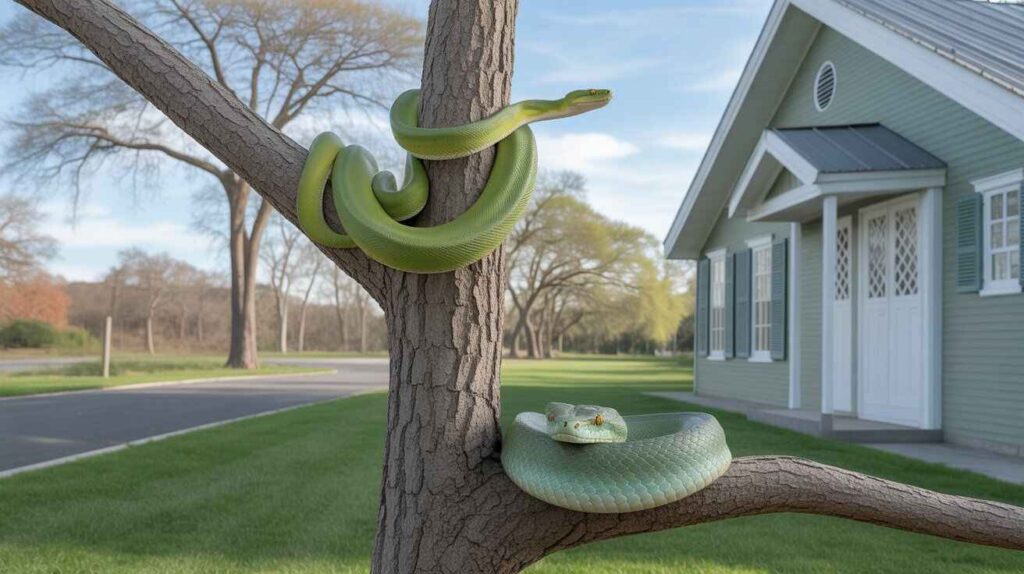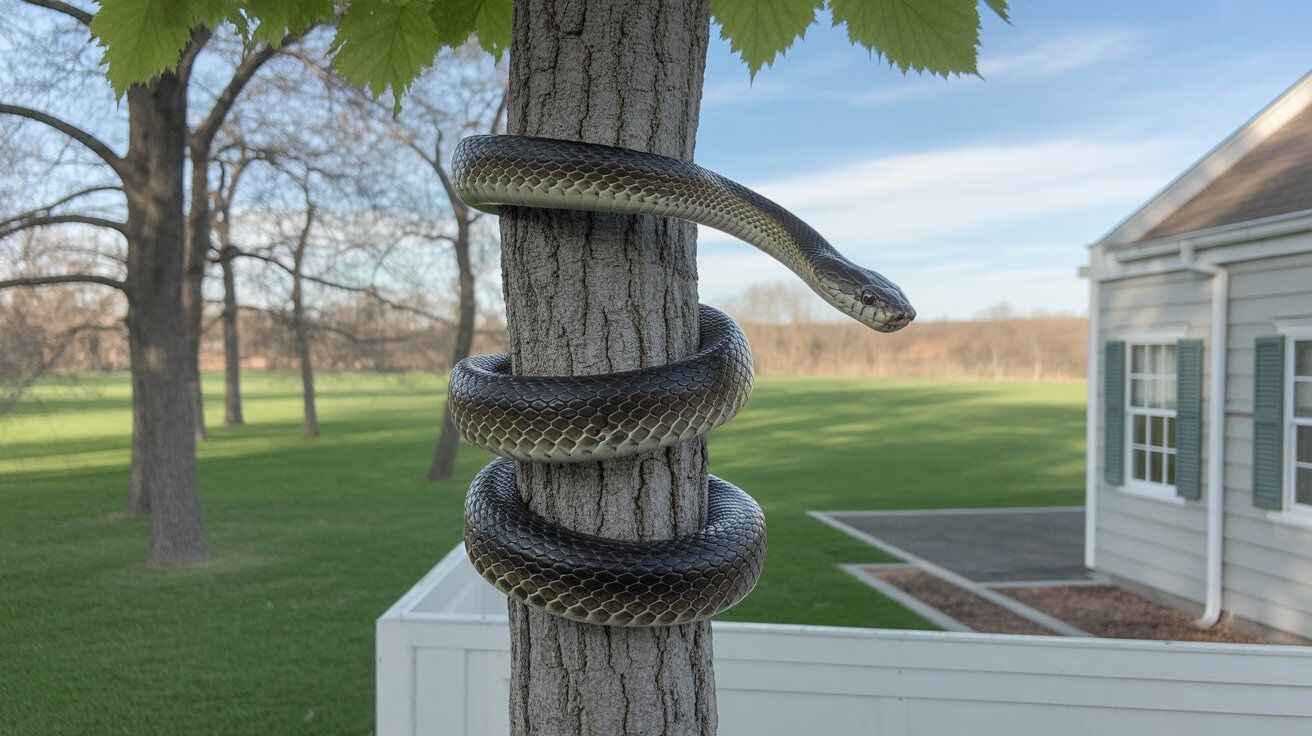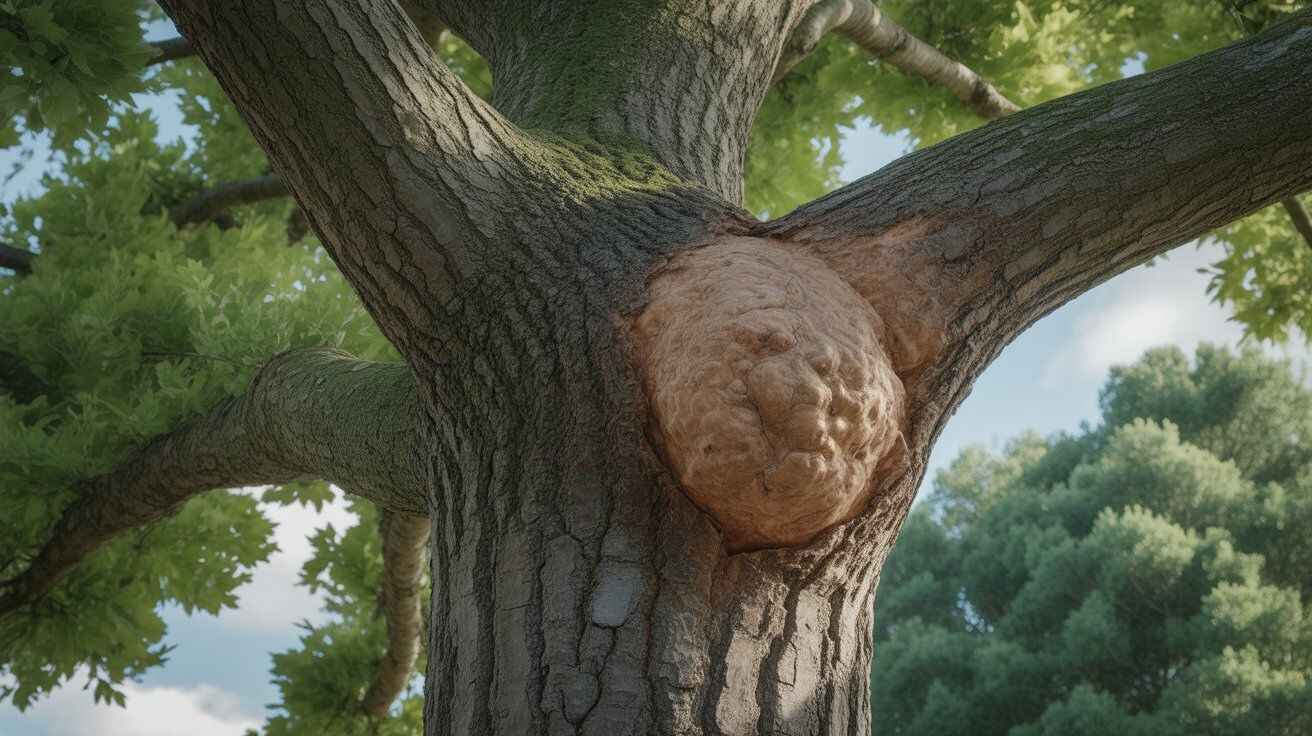Can all snakes climb trees? Learn which arboreal snakes, venomous species, and tree adaptations enable climbing and which stay ground-bound.
Can All Snakes Climb Trees?
Not all snakes can naturally climb trees. While most snakes can ascend when needed, only certain arboreal snakes are adapted for regular tree-dwelling. Body structure, muscular control, and belly scales determine climbing ability.
Terrestrial snakes may attempt to climb for food or safety, but heavy or non-prehensile species struggle. Understanding snake climbing behavior highlights the difference between occasional climbers and species that live predominantly in trees, such as green tree pythons and emerald tree boas.

Which Snakes Are Natural Tree Climbers?
Some snakes are true arboreal snakes, spending most of their lives in trees. Species like the green tree python (Morelia viridis) and the emerald tree boa (Corallus caninus) coil around branches to hunt and rest.
Flying snakes such as the paradise flying snake (Chrysopelea paradisi) and golden tree snake (Chrysopelea ornata) glide between trees, using lateral body movements. These tree-dwelling snakes rely on specialized snake climbing behavior, flexible spines, and belly scales to navigate vertical and horizontal surfaces with ease.
How Do Snakes Climb Trees?
Snakes climb trees using specialized snake climbing behavior and body adaptations. Most rely on lateral undulation, pushing their body against the trunk or branches, while heavier species use rectilinear locomotion for steady vertical movement.
Sidewinding helps on smooth or slippery surfaces. Belly scales and muscular control provide grip, allowing arboreal snakes to ascend or glide between branches. These adaptations, combined with a flexible spine, make tree-dwelling snakes highly effective climbers in their natural arboreal habitat.
Why Do Some Snakes Climb Trees?
| Reason for Climbing | Behavior / Activity | Benefit to Snake | Example / Note |
|---|---|---|---|
| Hunting | Targeting birds, eggs, small mammals | Access to food sources unavailable on ground | Common in arboreal species like green tree pythons |
| Escape / Safety | Avoid predators or rising water | Increases survival chances | Climbing helps evade threats quickly |
| Basking / Thermoregulation | Seeking sunlight on branches | Regulates body temperature | Branches offer optimal sun exposure |
| Shelter / Nesting | Using tree cavities or dense foliage | Safe resting and egg-laying sites | Provides protection from ground-based dangers |
| General Arboreal Adaptation | Regular tree climbing behavior | Thrives in elevated environments | Shows evolutionary adaptation to arboreal lifestyle |
Can Venomous Snakes Climb Trees?
Yes, many venomous snakes are capable climbers. Species like Australian elapids, including Tiger Snakes and King Browns, have been observed ascending trees to hunt or avoid danger. Even rattlesnakes, while primarily terrestrial, can climb when necessary.
These tree-climbing snakes rely on snake climbing behavior, using belly scales, muscular control, and flexible spines to navigate branches safely. Understanding that venomous snakes can inhabit trees helps explain their arboreal hunting strategies and predator avoidance techniques.
Which Snakes Rarely Climb Trees?
Not all snakes are built for life above the ground. Many terrestrial snake species, like pit vipers and some colubrids, rarely climb due to body weight, size, or habitat preference. Heavy-bodied snakes struggle with vertical movement, and those without specialized belly scales or strong muscular control find tree climbing difficult.
Understanding snake climbing behavior shows why only specific species adapt to arboreal habitats, while most snakes remain on the ground, focusing on terrestrial hunting, shelter, and survival strategies.

Summary: Do All Snakes Climb Trees?
While many snakes can climb when necessary, not all snakes are naturally adapted for tree climbing. True arboreal snakes, like green tree pythons, emerald tree boas, and flying snakes, have evolved specialized snake climbing behavior, flexible spines, and belly scales to thrive in arboreal habitats.
Terrestrial species rarely ascend due to size or anatomy. Understanding these differences highlights that the ability to climb trees is species-specific, and knowing which snakes are tree-dwelling provides insight into their behavior and ecology.
FAQ: Can All Snakes Climb Trees?
Q1: Can all snakes climb trees?
No, only certain arboreal snakes are naturally adapted for tree climbing.
Q2: Which snakes are true climbers?
Green tree pythons, emerald tree boas, and flying snakes regularly live in trees.
Q3: How do snakes climb?
They use lateral undulation, rectilinear locomotion, muscular control, flexible spines, and belly scales for grip.
Q4: Why do snakes climb trees?
To hunt, escape predators, bask, or find shelter.
Q5: Do venomous snakes climb?
Yes, species like Tiger Snakes and King Browns can ascend trees.
Q6: Which snakes rarely climb?
Heavy-bodied terrestrial snakes, like pit vipers and some colubrids.

Jhanzaib Khan, with over 50 years of dedication to nature and tree conservation, is a leading authority in the world of trees and environmental care. From his early years exploring forests to guiding communities in sustainable tree planting, Jhanzaib has combined hands-on experience with a lifelong passion for the environment. He specializes in tree species identification, tree care, forest management, and environmental awareness. His insights have been featured in multiple nature blogs, workshops, and local conservation projects.





